By Edited by Darren Constantino| January 1, 2016
1. Maintain proper tire pressure to maximize loader productivity. Incorrect tire pressure always slows a loader’s total work cycle. Low front tire pressures promote excessive side-to-side motion as the boom is raised, leading to slower cycle times. Higher-than-required rear-tire pressures contribute to poor fore-aft stability and slow cycle times. Operators may think the machine needs more rear counterweight as their rear tires tend to bounce, but additional counterweight cannot overcome incorrect tire pressures.
2. Match tire pressures to the application. Damp sand weighs a lot and can reach as much as 120-percent bucket fill, while a load of large, clean 2-in. to 18-in. rock weighs less and may reach only 80-percent bucket fill. Default tire pressures in your operator’s manual may not be right for the material you’re loading. Refer to your tire manufacturer’s load/pressure tables or contact your equipment dealer for proper inflation pressure by application.
Proper inflation provides a high level of traction and longer tire life by maintaining as large a contact area between the tire and ground as possible. If applications are changed frequently, you should inflate tires for the heaviest materials.
3. Use differential locks properly. Differential locks can significantly increase traction when one wheel encounters a slippery surface or momentarily loses contact with the ground. However, locked differentials can contribute to tire wear during turns. Differential locks should be disengaged when additional traction isn’t needed.
4. Avoid tire spinning. Instruct operators to use the machine’s hydraulics to crowd the material when filling the bucket. Relying mainly on the machine’s forward motion to fill the bucket increases the likelihood of losing traction and spinning tires, resulting in accelerated wear. Some loaders feature a spin-control setting.
5. Avoid obstacles. It’s important that operators understand that even though they’re running a large machine designed for work in the off-road environment of quarries and mines, the tires they’re rolling on are not invulnerable to debris and sharp objects. Tire chains can provide a significant measure of protection against damage-causing obstacles, but the chains themselves will cause some tire wear, require maintenance and add weight to the machine that increases drivetrain load.
Tire chains can provide a significant measure of protection against damage-causing obstacles, but the chains themselves will cause some tire wear, require maintenance and add weight to the machine that increases drivetrain load.
6. Limit wet conditions. Removing water from operating surfaces can be tough to accomplish, but limiting the amount of water your loaders run in can improve tire life. Water acts as a lubricant that makes it easier for objects to cut or puncture tires.
7. Slow down. Slowing down may seem counterproductive, but speed can negatively affect tire life. Like water, higher internal tire temperatures from fast running between work areas can make tires more susceptible to damage from obstacles and tread separation. Slower speeds also allow the operator more time to see and avoid obstacles.
8. Inspect tires daily before operation.
The operator or maintenance staff should visually inspect the loader’s tires daily.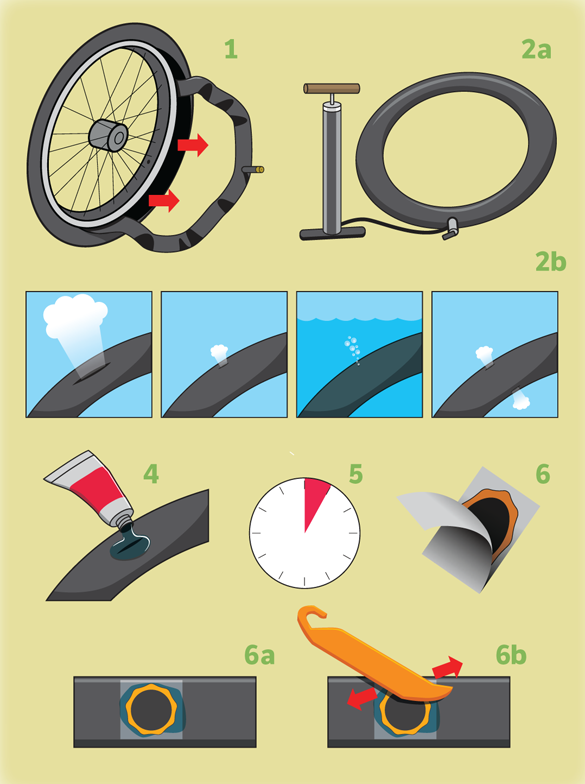 Check the condition of valve stems and valve caps. Look for cuts, cracks and irregular wear on both the tread and tire shoulders. It’s important to find issues early, as less-costly repairs may be possible at this time rather than waiting for a major problem requiring tire replacement to happen.
Check the condition of valve stems and valve caps. Look for cuts, cracks and irregular wear on both the tread and tire shoulders. It’s important to find issues early, as less-costly repairs may be possible at this time rather than waiting for a major problem requiring tire replacement to happen.
9. Set up your operation with tire preservation in mind. Minimize transport distances between work areas and eliminate the need to make sharp turns when possible. Keeping roadways groomed will also benefit tire life.
10. Use telematics to help manage your time programs. Don’t let tire management get you down. Today’s telematics products can often help you manage tires remotely. For example, some telematics services enable users to view tire pressure via an Internet interface or mobile app. Tire temperature along with differential lock and spin-control utilization can be viewed in the Internet interface, as well.
Information for this article courtesy of John Deere.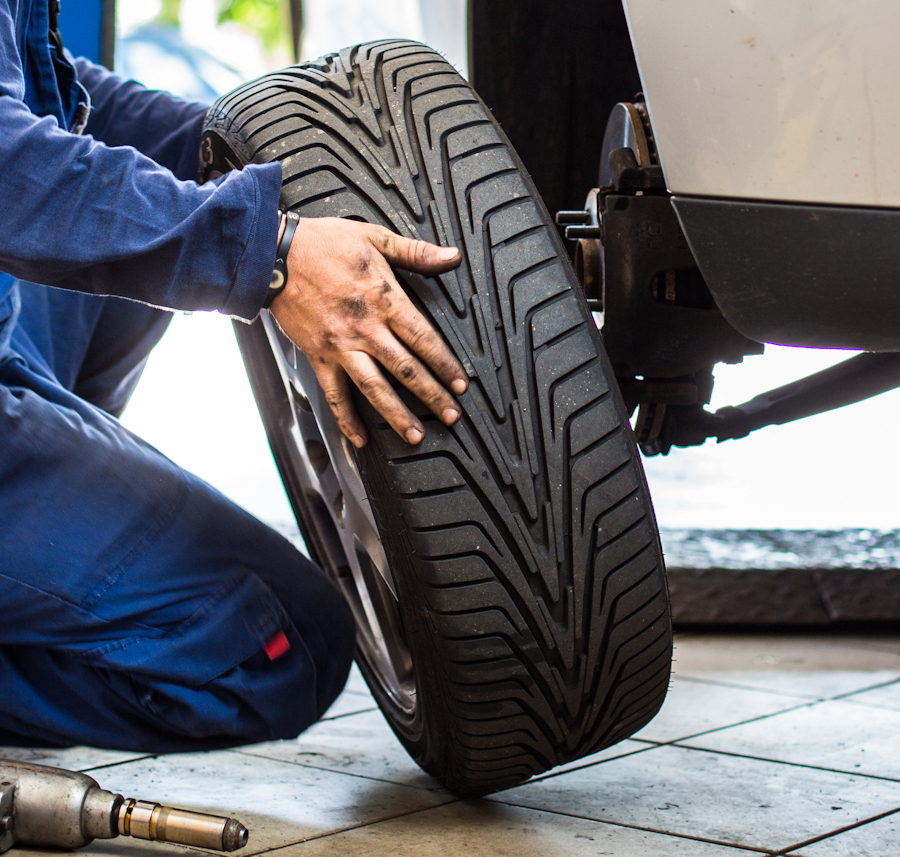
This article is tagged with john deere, tire preservation, Tires, wheel loader tires, wheel loaders and posted in featured, Features
The wrong tire choice drives up operating costs and slashes wheel loader productivity.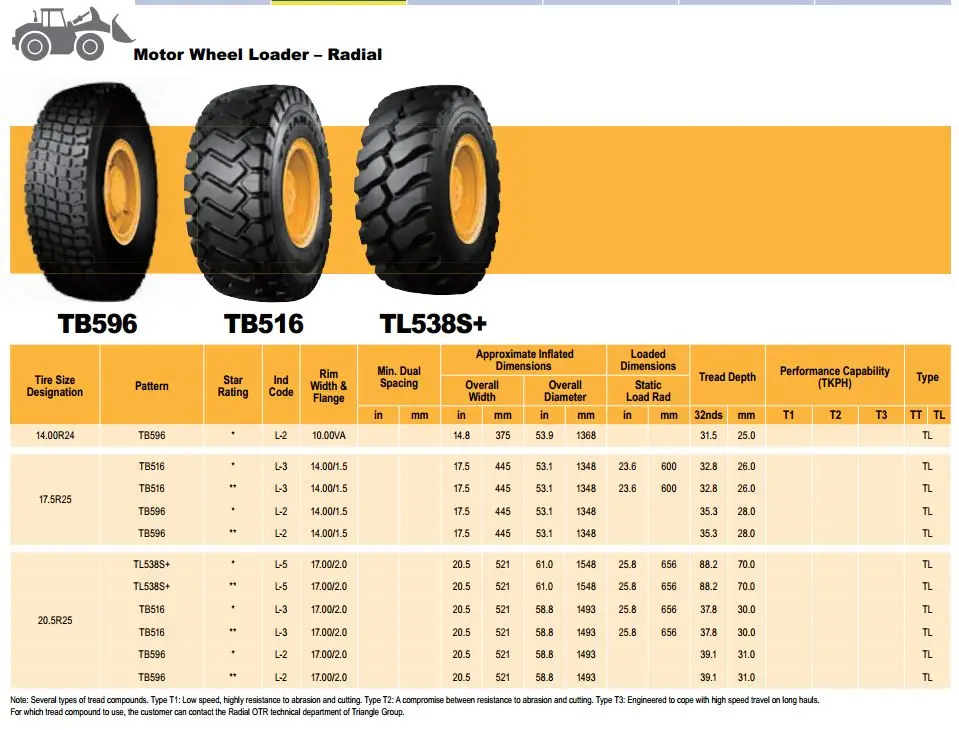
April 15, 2021
Curt Bennink
According to Piero Torassa, field engineer, BKT Europe (pictured), wheel loader tires are are increasingly specific and high-tech products. It is the expert’s task to successfully translate each company’s requirements into selecting the optimal tire.
BKT
Selecting the best wheel loader tire can have a dramatic impact on operating costs. “Two of the most common triggers for tire failure for wheel loaders result from mismanagement of tire maintenance, or choosing the wrong tire for the application,” says Robby Hamby, director, Bridgestone OTR and Ag Product Programs. It’s critical that the right tire type, rating and pattern are selected.
The size and capacity of the wheel loader affects the correct choice. “Choose a tire with the load capacity that meets or exceeds the gross vehicle weight of the loader,” adds Hamby.
“We can look at wheel loader size in three ways: the gross weight of the machine itself, the capacity of its bucket and the horsepower and torque the loader exerts on the wheel,” says Bruce Besancon, vice president, Yokohama OTR Tires, Yokohama Off-Highway Tires America Inc. “As any of those three measures increases, demands on the tires grows significantly.The correct tread design, tread depth and load capacity are key in determining the correct tire that will maximize your loaders performance.
“As any of those three measures increases, demands on the tires grows significantly.The correct tread design, tread depth and load capacity are key in determining the correct tire that will maximize your loaders performance.
“Every aspect of a tire is engineered and manufactured with those demands in mind, he adds. “The ability of the entire tire to handle a load – particularly a dynamic load that is changing as the bucket is raised and lowered – the capacity of the bead and sidewall to withstand the force from the axle, and the capability of the tire to flex and roll without building up excess heat are all critical. Buying more tire than you need does not make economic sense, but neither does buying a tire that is under-spec’d for the application and doomed to fail.”
“Bigger machines carry heavier loads, which can translate into more heat build-up,” explains Laurent Greppi, global product category manager, Michelin. Choose the right rubber compound to avoid premature wear. Also consider the operator. “When selecting a tire for bigger machines, operator fatigue is an important issue. “Just changing the tires could have significant impact on vibration levels in the cabin, leading to stress, fatigue and ultimately safety issues. Talking to operators regularly about machine performance, especially after changing tires on your loaders, can be an effective way to assess performance.”
Also consider the operator. “When selecting a tire for bigger machines, operator fatigue is an important issue. “Just changing the tires could have significant impact on vibration levels in the cabin, leading to stress, fatigue and ultimately safety issues. Talking to operators regularly about machine performance, especially after changing tires on your loaders, can be an effective way to assess performance.”
“Wheel loaders are typically purpose-built for very specific applications and demand tires that are just as specific to the material being dug and moved, the surface condition and the distance and speed of travel,” says Besancon. “With those factors in mind – as well as the bucket size and the load to be carried – you can choose the tire with the construction, tread depth and pattern, and compound for the application.”
“There are many factors to consider: the type of machine used, its size, the application for which it is used and the type of operations it carries out,” says Piero Torassa, field engineer at BKT Europe. “Another essential factor in selecting the best tire is the condition of the soil which it works.” Work times, distances covered and type of route are also factors. Finally, consider the weight which the machine must transport, load and/or unload.
“Another essential factor in selecting the best tire is the condition of the soil which it works.” Work times, distances covered and type of route are also factors. Finally, consider the weight which the machine must transport, load and/or unload.
“To extend the life of a tire, it is necessary above all to choose the perfect product for your needs,” says Torassa. “We always tell customers to put their trust in our tire consultants and suppliers. These are increasingly specific and hi-tech products. It is the expert’s task to successfully translate each company’s requirements into selecting the perfect tire. By choosing the right product, you save on time, consumption and possible replacements and downtime.”
You need to decide between radial or bias tires. “Radial tires offer better cut resistance, improved traction and cooler running that will maximize uptime, while bias tires offer more stability, which will provide better ride comfort in larger loaders,” says Hamby.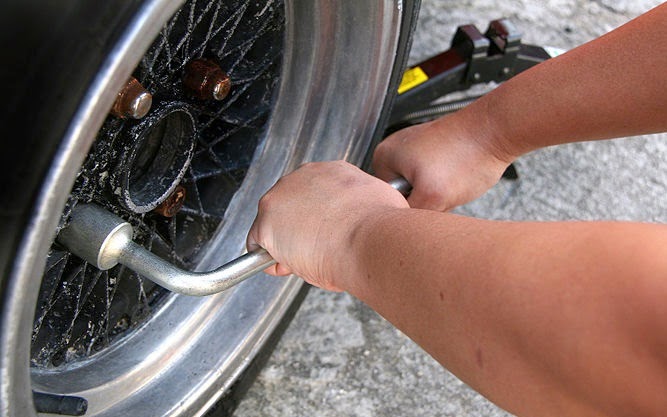
Longer travel cycles tend to build up heat. “That is where you do the math on whether to invest in radial tires that can allow you more ton miles per hour (TMPH) because they can operate more safely and efficiently over longer distances,” says Besancon.
A radial tire tends to be more expensive than a bias tire. However, the machine’s total cost of ownership may be lower because the radial provides better traction and flotation. It also contributes to lower fuel consumption. Radial tires are ideal in applications where traction, tread wear and distance are important factors. They are well suited for wheel loaders operated on finished surfaces for loading applications.
After determining the best tire type for the application, the next step is to select the tread pattern or tire design. “The correct tread design, tread depth and load capacity are key in determining the correct tire that will maximize your loaders performance,” says Hamby. “It’s important to understand whether you are looking for a tire that provides better heat resistance, cut resistance and traction, or wear to improve total cost of ownership.”The fewer lugs and the more voids lead to more traction. This is because the tread can clean out much faster to provide grip in each revolution a tire makes.
“It’s important to understand whether you are looking for a tire that provides better heat resistance, cut resistance and traction, or wear to improve total cost of ownership.”The fewer lugs and the more voids lead to more traction. This is because the tread can clean out much faster to provide grip in each revolution a tire makes.
L-type tires are designated for wheel loaders and wheeled dozers, while there are also E-type tires for earthmovers, G-type tires for graders and C-type tires for compactors. For the loader tires, there is a standardized identification code:
According to the Tire and Rim Association, there are three general classifications for tread thickness – regular, deep and extra deep.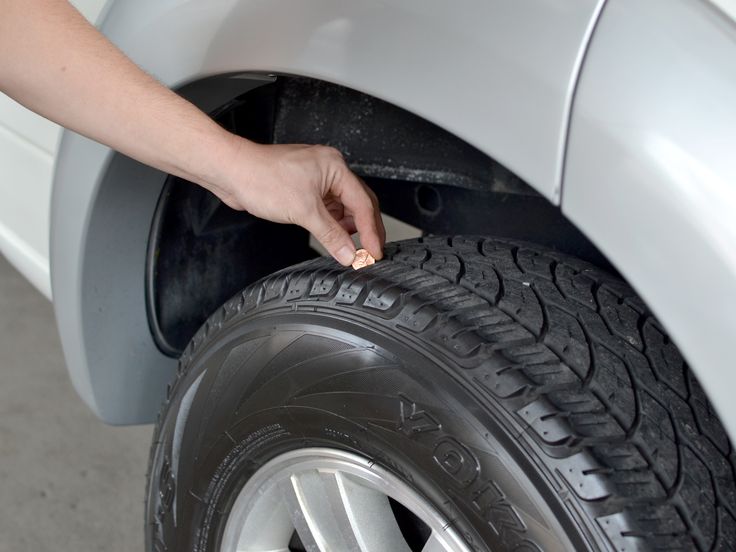 Deep and extra deep are 1.5 and two times thicker, respectively, than regular.
Deep and extra deep are 1.5 and two times thicker, respectively, than regular.
“Balancing the need for cut/wear resistance and heat dissipation can dictate whether the best investment is in regular tread (an L2 or L3 tire), a deep tread that is 50 percent deeper (L4) or extra-deep tread (L5), which is 2.5 times the depth of a regular tread,” says Besancon.
Knowing the loader’s application is critical to understanding which tire to run. “For example, if the loader is used to load out over the road trucks at a stone quarry, one might consider an L3 tread design,” says Tim Good, open pit sales manager, Maxam Tire. “But if the loader is used in multiple applications like feeding shot rock into the crusher and then loading trucks with the finished material, one should consider an L4 application. The L4 provides a deeper tread for more protection, traction and longer wear due to a deeper tread. An L5 loader tire should be considered when working in any moderate to severe underfoot conditions.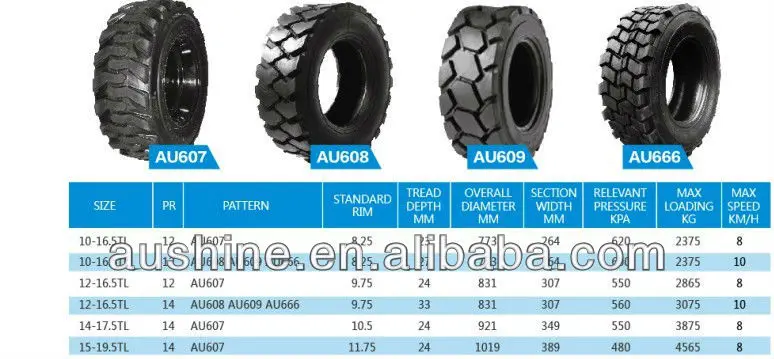 ” The deeper 250 level tire maximizes protection of the casing. But with that deeper tread option, the user is limited to 5 mph for no more than 250 ft.
” The deeper 250 level tire maximizes protection of the casing. But with that deeper tread option, the user is limited to 5 mph for no more than 250 ft.
“If the loader currently has a wide base (80 aspect ratio) tire, you can go from an L3 to an L5 tire,” notes Good. “What the loader is used for determines the tread pattern and tread depth required. Other options include a low profile (65 Series) aspect ratio tire. Generally, the loaders are ordered from the factory with the low-profile tires as the tires require a wider rim. For example, if the loader is fitted with 29.5R25 tires, one can convert over to 875/65R29 tires with new rims. The overall diameter of the tires is equal even though the rim OD goes from a 25-in. to 29-in. rim. Plus, the 65 series tire fits on a 2-in. wider rim. The advantage to the user is that the low profile 65 series tire, when mounted on a loader, has a 15 percent increased capacity, providing more productivity with improved ride, stability and traction. ”
”
Underfoot conditions will have a major influence on correct tire choice. “If the piece of equipment is being operated in a very soft underfoot condition, one would need to consider an L2, L3 or even L4 depending upon what the machine is doing,” says Good. “The difference is lug to void ratio. The fewer lugs and the more voiYokohama offers a wide range of compounds based on the uses of the tire, from standard multi-use RE-R compounds to special compounds for extra heat resistance (HR-V) or cut resistance (CP-S). There is both art and science in selecting the best compound for a particular application based on the tradeoffs among heat, abrasion and cut resistance.Yokohamads lead to more traction. This is because the tread can clean out much faster to provide grip in each revolution a tire makes.”
There are tradeoffs. Normally, the higher the net (lug) to void (space between the lug) ratio the more wear. “One cannot obtain a high net-to-void ratio without getting less traction,” explains Good.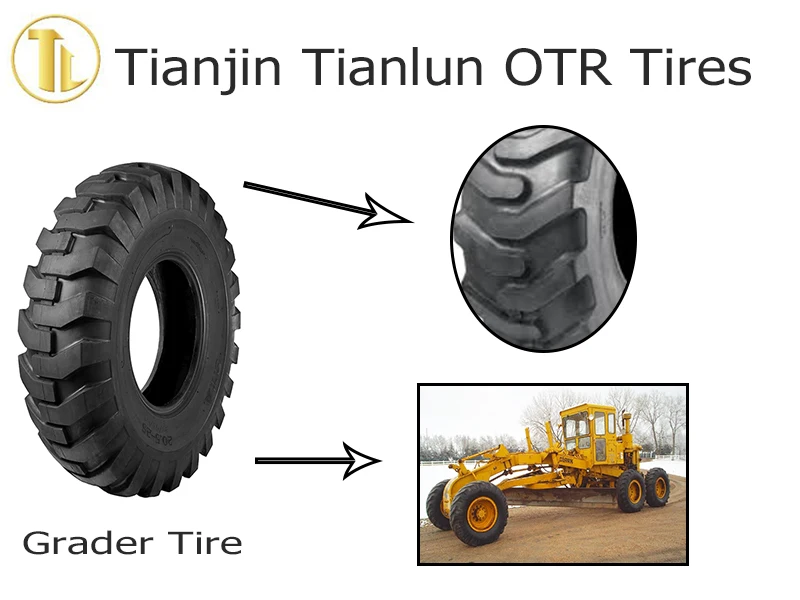
“When the machine is placed into a ‘load and carry’ operation, it’s crucial to note underfoot conditions,” says Good. “If the machine is operating in the pit area loading shot rock from the face to the in-pit crusher or conveyor, one needs to decide between an L5 deep rock tread tire or a L4 rock tread tire. This will depend on the loaders’ travelling distance. If greater than 250 ft. and faster than 5 mph, then an L4 should be considered.”
Each jobsite poses unique demands. “If we’re working at the face of a quarry, that loader is operating on broken rock – a brutal environment for cuts and impact damage,” says Besancon. “On the other hand, it is probably not traveling very far to dump its bucket, so heat buildup may not be the primary factor that needs consideration. We can specify a very deep, cut-resistant tread that can withstand the rock without as much concern about the thick tread trapping heat in the tire. In another case, aggregate or sand may be lifted and hauled a much greater distance across a better surface.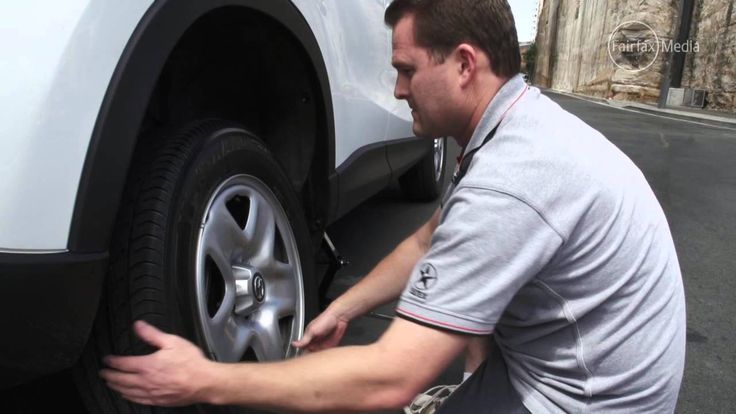 In that situation, the tire is not as likely to be subjected to the impact, but heat buildup from friction and deflection is the bigger concern. A tire with heat-dissipating nylon breakers and compound would be a better choice.”
In that situation, the tire is not as likely to be subjected to the impact, but heat buildup from friction and deflection is the bigger concern. A tire with heat-dissipating nylon breakers and compound would be a better choice.”
“Once we’ve got the basics down, we can look at value and cost per hour,” says Besancon. “In some applications, radial tires quickly become a better investment because they last longer, wear more evenly and reduce fuel consumption because of their flatter, more even footprint. On the opposite end of the spectrum, loaders in severe duty situations like scrap yards or waste transfer stations can benefit dramatically from switching to solid tires, which wear longer and are impervious to flats and punctures or sidewall cuts. Even foam-filled pneumatics can be sidelined when the sidewalls are slit, so it’s worth the extra cost of a solid tire in those tough cases.”
Are you working in abrasive conditions? “A tire with a proven, tough rubber compound with resistance to chunks will be your best ally,” says Greppi. “If you’re working in soft mixed surfaces where traction is required, you’ll look for a tread with deeper lugs to guarantee the machine won’t get stuck, meaning that the application also impacts the tread (or sculpture) choice. If you are working in hot temperatures where temperatures can soar, you’ll need to look for specific tires that use rubber compounds and features that help eliminate heat build-up that could lead to failure.”
“If you’re working in soft mixed surfaces where traction is required, you’ll look for a tread with deeper lugs to guarantee the machine won’t get stuck, meaning that the application also impacts the tread (or sculpture) choice. If you are working in hot temperatures where temperatures can soar, you’ll need to look for specific tires that use rubber compounds and features that help eliminate heat build-up that could lead to failure.”
“Compound chemistry is extremely important and it has been an important focus for Yokohama for decades,” says Besancon. “We offer a wide range of compounds based on the uses of the tire, from standard multi-use RE-R compounds to special compounds for extra heat resistance (HR-V) or cut resistance (CP-S). There is both art and science in selecting the best compound for a particular application based on the tradeoffs among heat, abrasion and cut resistance. That is a conversation you’ll want to have with a tire dealer who understands your business and your equipment.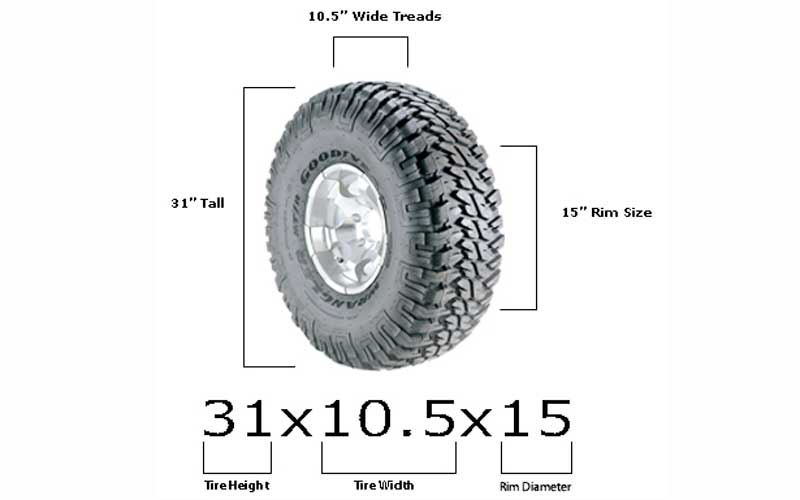 That dealer can save you a tremendous amount of money and trouble.”
That dealer can save you a tremendous amount of money and trouble.”
Tires are designed to work most efficiently at a specific pressure for the necessary load, providing the proper amount of vertical deflection. “Maintaining tire inflation pressure is one of the best ways to prevent unscheduled tire-related incidents and help ensure safety, uptime and jobsite efficiency,” says Robby Hamby, director, Bridgestone OTR and Ag Product Programs. “By taking a proactive approach to tire maintenance and management through the use of data-centric solutions, owners can improve productivity and, ultimately, profitability by getting the most out of their assets over time.”
“The correct pressure will allow the tire to carry the load it was designed for and the casing will deflect correctly,” says Tim Good, open pit sales manager, Maxam Tire. “Not having enough pressure can cause a tire to separate due to heat or over deflection which weakens the casing. On the flip side, too much inflation can increase the chances for a tire to get an impact break easier or separate in the center and shoulders of the tread.”
On the flip side, too much inflation can increase the chances for a tire to get an impact break easier or separate in the center and shoulders of the tread.”
Monitoring heat buildup in the tire is also important. “Impact breaks and punctures are the most dramatic causes of wheel loader tire failure, but the much bigger challenge is actually separation due to heat,” explains Bruce Besancon, vice president, Yokohama Off-Highway Tires America. “A tire contains dozens of layers and components that are all fused together at the factory by heat and chemistry. When that tire is exposed to high heat from deflection and friction, the process can be undone and the components can separate from each other, causing the tire to fail.
“Monitoring tire heat is extremely helpful in helping ensure that the tire will be operated within safe parameters, just as monitoring inflation pressure is,” says Besancon. You can spot imminent problems. “Just watching those monitors over the course of a normal shift can indicate whether you could benefit from an adjustment in inflation pressure or a switch from bias-ply to radial tires.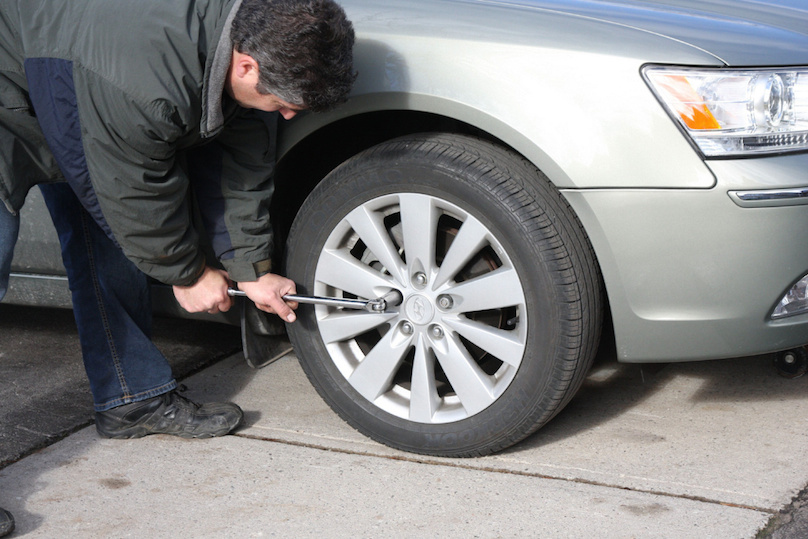 ”
”
To maximize performance, tires require constant monitoring. “BKT has launched a system called SPOTECH, a device with an accelerometer which records all the lateral, longitudinal and vertical movements, as well as the related forces in addition to speed, duration of the cycle and other parameters,” says Pireo Torassa, field engineer at BKT Europe. “This is used to analyze the use of tires in depth, taking account of the affects and consequences on the equipment on which the tires are fitted. The goal is to increase efficiency and reduce waste.”
Tire pressure monitoring systems (TPMS) continue to gain acceptance. “We have seen more of the growth in the haulage side of the applications, especially on the 57-in. and up sizes where the cost needs to be closely monitored,” says Good. “Unmonitored haulage tires can easily exceed their TMPH (ton mile/hour) ability, which shortens its expected life and wear-out target.” If the loader is performing a load and carry application, having a TPMS will ensure that the tires are operating within their rated capacity.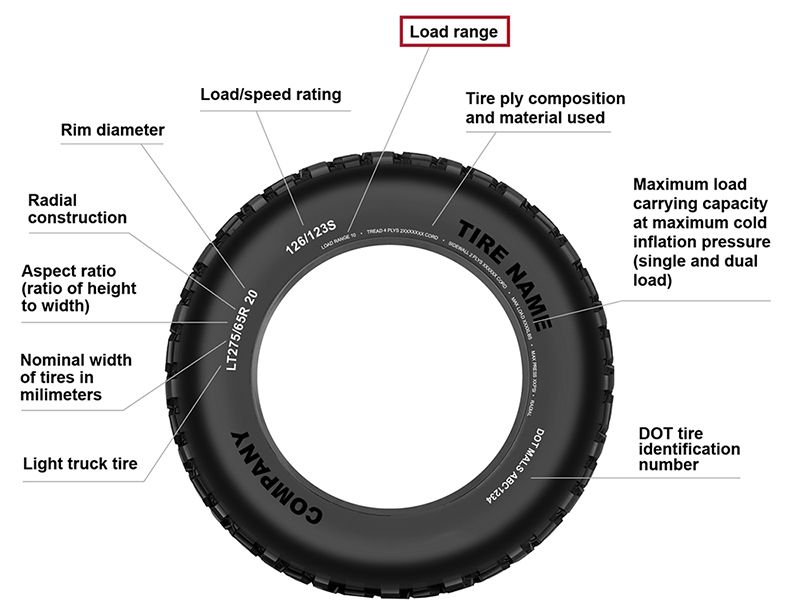
“Knowing if the inflation pressure is pushing the 20 percent increase over the cold inflation or the internal temperature has reached the critical setting allows the site management to make a production change with loader saving significant cost,” says Good. “Therefore, TPMS systems can be very valuable if action is taken when the tires start to run at a higher pressure or temperature. Knowing how to properly address the situation in a timely manner is critical to the success of owning a TPMS system.”
“There is a lot of potential for TPMS systems,” says Laurent Greppi, global product category manager, Michelin. “We believe they will become standard in coming years.” According to Michelin, their principal advantages include:
“Tire monitoring instruments help to continuously monitor the performance of the product, but they will never take the place of the tire expert who, thanks to their experience, can intervene if needed,” says Torassa.
AI and connectivity, along with renewable energy and alternative fuels, will dramatically impact the construction jobsite in the next 10 years, according to a recent whitepaper published by the Association of Equipment Manufacturers.
Instead of focusing on fuel prices, a smarter strategy for construction contractors is focusing on ways to reduce fuel burn.
With Cat® Dozers, you’re ready to push ahead of the competition—and keep more money in your pocket.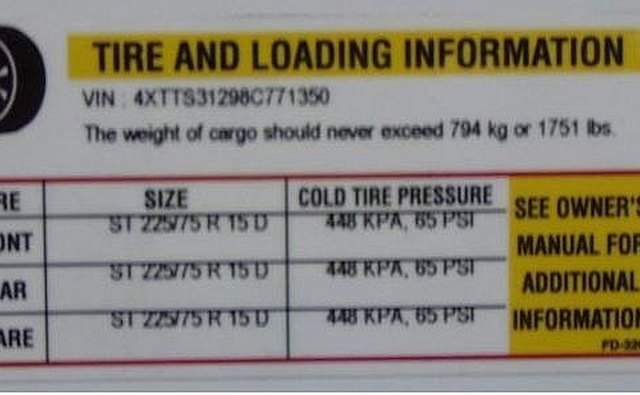
Available in 5 SKUs, the new wide-based rear fitment model is offered in 5 different bolt patterns to allow fitting for a wide variety of UTVs.
The EM 933 SUPER offers a rugged sidewall design with a protruding rib that enables close contact of two tires without the need for a special rubber ring to avoid rock penetration.
Designed to perform like pneumatic tires, the MICHELIN X TWEEL airless radial tire line replaces the current tire-and-wheel assembly, removes the need for complex mounting equipment and eliminates downtime due to flat tires.
Designed for tractors, the RIDEMAX IT 697 M+S winter tire ensures gripping for outdoor operations on icy and snowy roads without the need of snow chains.
The JUMBO TRAX HD features a block pattern design, as well as cut and chip resistance for heavy-duty service.
With Cat® Dozers, you’re ready to push ahead of the competition—and keep more money in your pocket.
Fleet managers and operators need to protect wheel-ends in off-highway and severe-duty applications, where dust and dirt can accumulate quickly and damage components.
The Galaxy AT Grip Steel steel-belted radial is available in 260/70R16.5, 300/70R16.5 and 360/70R17.5 sizes.
Specifically designed for heavy-duty construction, logging, oil and mining work vehicles, its tread compound helps resist cuts, chips and tears and provides durability.
Designed for machines and industrial work vehicles, the MULTIMAX MP 538 is currently available in size 405/70 R 20 MPT.
This OTR radial, specially designed for high-speed mobile cranes, comes in. This U.S. DOT approved radial features a universal tread pattern designed to improve traction and deliver a comfortable ride, while minimizing fuel consumption.
Looking to maximize productivity on your job site? Komatsu’s intelligent Machine Control (iMC) can help you get the most from your machines, crew and carefully designed plans.
During the large-scale loading of the enterprise, a large amount of goods requires special placement. And since the volumes do not allow you to move raw materials on your own, we recommend using the forklift rental service. The involvement of auxiliary special equipment will facilitate and speed up the loading process.
You can rent any forklift, for example Toyota 02-8FG15V3000 at any convenient time. We provide long-term rental services, which will significantly help you increase your fleet of used equipment. nine0003
We provide long-term rental services, which will significantly help you increase your fleet of used equipment. nine0003
Order special equipment
Buy spare parts
Order service
The main advantages of our company are:
Having ordered equipment from us, you do not have to buy a device for the full cost for a one-time job. It's very expensive and not worth it because you won't need it later on. But ordering a used loader from us is very simple. The most popular model is Toyota 02-8FG15FSV4000. In our park we have all types of loaders for work of any complexity.
If you have such a device, we provide the opportunity to purchase quality tires for loaders at the lowest price. Our specialists will provide you with any necessary advice. The possibility of renting equipment from us will help you get rid of thoughts about where you will store your forklift. Our company will independently deliver the equipment to you and also take it back after the work is done. nine0003
Our specialists will provide you with any necessary advice. The possibility of renting equipment from us will help you get rid of thoughts about where you will store your forklift. Our company will independently deliver the equipment to you and also take it back after the work is done. nine0003
The main rule is the timely replacement of tires on the loader. Replacement is made when the tread height has changed. Many owners of forklifts very rarely change or press tires on their devices in order to save money. And they even start replacing when the tread is already completely erased. Our company takes care of the condition of the forklifts. We monitor tire wear and carry out troubleshooting work in a timely manner.
Without timely replacement of tires, the loader will not be able to operate at full capacity. Also, non-compliance with the rules can affect the safety of work and the failure of individual components of the device. nine0003
TOYOTA Forklift 7FBE15 for rent
In stock
TOYOTA
7FBE15V3000
electro
up to 1500 kg.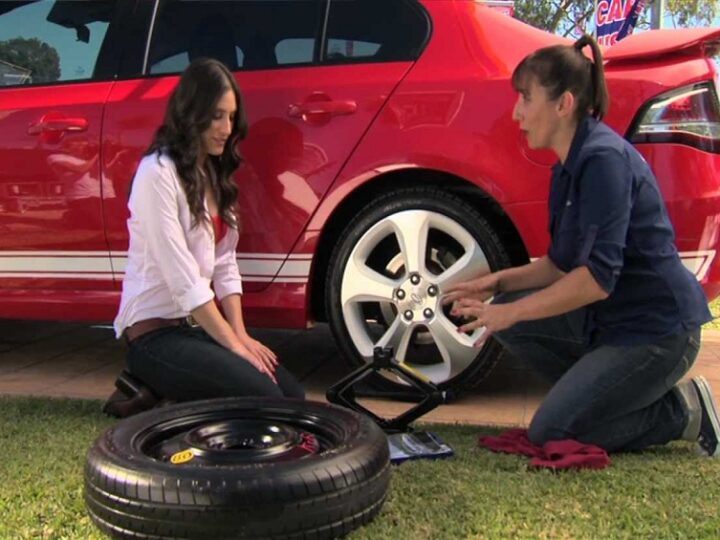
To order
TOYOTA Forklift 62-8FD20 for rent nine0003
In stock
TOYOTA
62-8FD20FSV4500
up to 2000kg kg.
To order
TOYOTA Forklift 62-8FD30 for rent
In stock
Toyota
62-8FD30FSV4500
up to 3000kg kg.
To order
TOYOTA Forklift 02-7FD18 for rent
On loan
TOYOTA
02-7FD18FV3000
up to 1500kg kg.
To order
TOYOTA Forklift 02-8FG15 for rent
In stock
TOYOTA
02-8FG15V3000
gas-petrol
up to 1500 kg.
To order
nine0002 TOYOTA Forklift 02-8FG15 for rentIn stock
TOYOTA
02-8FG15FSV4000
gas-petrol
up to 1500 kg.
To order
TOYOTA Forklift 8FG15 for rent
In stock
TOYOTA
8FG15FSV4300
gas-petrol
up to 1500kg kg.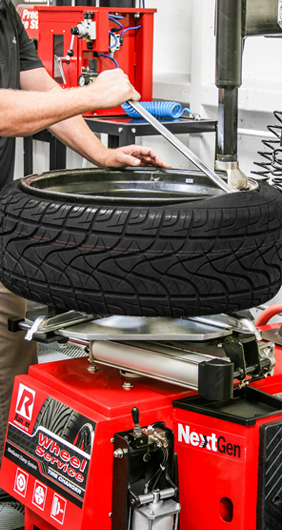
To order
TOYOTA Forklift 62-8FD18 for rent
On loan nine0003
TOYOTA
62-8FD18FV3000
up to 1800 kg.
To order
TOYOTA Electric forklift 7FBE15 for rent
In stock
TOYOTA
7FBE15FSV4500
electro
up to 1500 kg.
To order
TOYOTA Electric forklift 7FBE15 for rent
In stock
TOYOTA
7FBE15V3000
electro
up to 1500 kg. nine0003
nine0003
To order
TOYOTA Forklift 02-8FG15 for rent
On loan
TOYOTA
02-8FG15FSV4500
gas-petrol
up to 1500 kg.
To order nine0003
Loaders is an indispensable equipment in any enterprise where goods are constantly loaded and unloaded and stored. The use of this type of equipment can significantly save time on loading operations. In addition, many works in the warehouse are simply unbearable for an ordinary person, so technology comes to the rescue.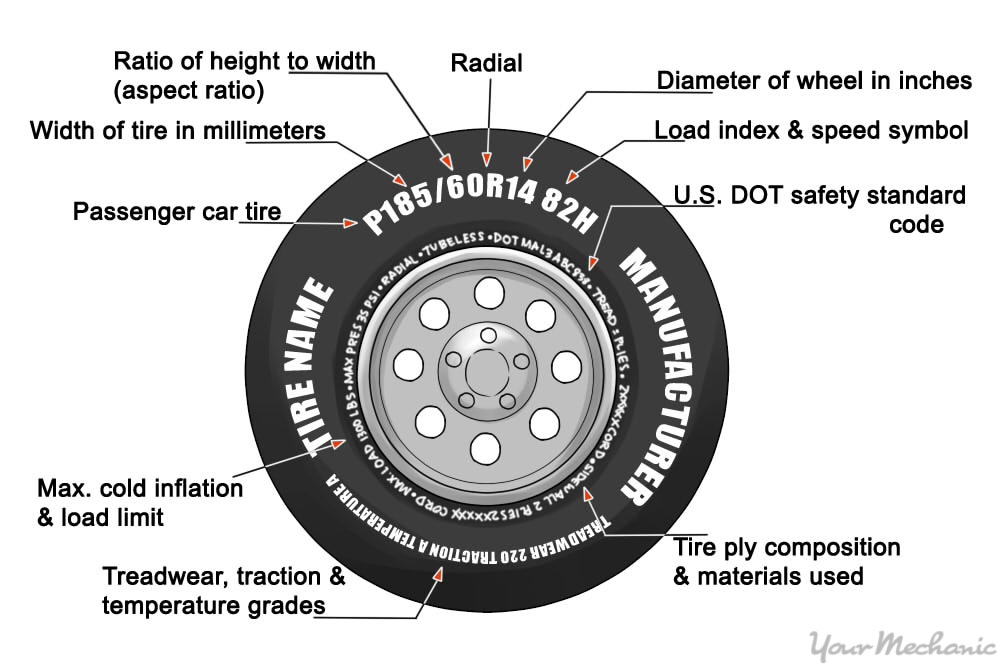 nine0003
nine0003
There are a large number of manufacturers of warehouse equipment. Some of them have already established themselves as suppliers of high-end machines. Chinese forklifts are considered one of the most popular machines in the modern technology market. And this is no coincidence. Their price is somewhat different from European manufacturers, and the quality remains at the same level. In addition, companies from China supply high-quality spare parts and additional equipment.
Loader tires nine0042 are an integral part of this type of equipment. There are two main types of tires.
This type of tire is designed to work on uneven surfaces. They perfectly smooth out all the shocks during movements, while maintaining the suspension of the car. Their main disadvantage is their vulnerability to cuts and punctures. But they can also be used when working in snowy areas. Snow chains are available as optional equipment. They are mounted on the drive wheels, and the operation of the machine becomes more efficient. nine0003
nine0003
Specialists involved in the technical equipment of warehouse equipment will help you choose the most suitable option for various operating conditions of equipment. With the right choice, tires can last a long time without creating problems with their replacement.
(except hydrostatic brake systems) operate on the principle of friction, and friction generates heat. Excessive and excessive use of the brakes leads to overheating and premature wear, which in turn can lead to brake failure. The most common examples of "abuse" of the brakes are:
an unskilled operator does not know how to calculate his strength and the ability of the machine: he accelerates the machine too much, and then slows down too sharply and quickly;
brakes are often activated unintentionally: if the operator is accustomed to keeping his foot on the brake pedal, he often makes accidental applications;
Operators working in a rush (to achieve greater productivity or to exceed regulations) when working over short distances, first step on the gas hard and then slam on the brakes to stop. nine0003
nine0003
To prolong brake life, Kawasaki experts recommend that novice operators release the gas pedal and slow down the machine a little earlier, so that the loader coasts and braking occurs due to the mass of the machine and the load being transported, and the brake pedal is depressed when the machine has almost stopped.
It is also important to understand how to make the best use of the clutch release. "We often see many operators fail to use the clutch disengagement," says Phillips. "When they load material into a truck bed or bin, they drive with the brakes on, causing them to wear out instantly." nine0003
Clutch disengagement allows the transmission to be shifted into neutral during the braking cycle. “By depressing the release pedal, you shift into neutral, and after that you can brake,” explains Phillips, “After that, if you press the accelerator pedal with the brakes applied to start working with the hydraulic equipment of the machine (for example, if you want to raise or lower the bucket or control the movement of the boom), the loader will no longer accelerate against braking. " nine0003
" nine0003
"If the operator uses the clutch release pedal correctly, then when working with a hydraulic tool, the transmission will disengage and there will be no negative effect on the braking system," adds the expert.
Handle the gearbox correctly " nine0003
" nine0003 More often than not, the situation is exacerbated by the fact that operators seek to reduce the cycle time to increase productivity. This can lead to premature failure of these costly systems. Thus, manufacturers have to come up with ways to get out of this situation.
For example, Volvo has developed the Optishift transmission system, which is installed by default on the company's large loader models, and allows the operator to immediately shift into high gears, but automatically activates the brakes in this case. “We call it reversing braking,” Phillips says. “Whenever the operator tries to change the direction of the machine, the loader's on-board computer will detect that a high gear shift is occurring and will automatically apply the brakes to stop the machine. So even if the operator has this bad habit, he won't need to relearn how to operate the gearbox: the car will take care of the possible problem and be able to prevent it." nine0003
Loaders are also equipped with additional automation features to help protect critical equipment and components. For example, loaders have protection against overheating. “If any system (such as the engine or transmission) overheats, the engine will go into a derated mode of operation to prevent possible damage,” Chesterman comments, “If our Tier 4i engines are overheating the axles, the operator is given the appropriate warning." nine0003
For example, loaders have protection against overheating. “If any system (such as the engine or transmission) overheats, the engine will go into a derated mode of operation to prevent possible damage,” Chesterman comments, “If our Tier 4i engines are overheating the axles, the operator is given the appropriate warning." nine0003
Modern forklifts equipped with "smart" electronics are able to warn the operator of the appearance of problems and other types. Sensors transmit data to the operator (indicators of temperature, liquid level, pressure, etc.) from systems operating in a critical mode. This data is displayed on the dashboard or on-board computer display. Alarm LEDs and instrument dials are positioned so that the operator is aware of the operation of alarms before any breakdown occurs. nine0003 Take the time to warm up the machine and shut down
Forklift operators are often tempted to skip the recommended machine warm-up before starting work. However, such negligence adversely affects the condition of the engine and hydraulic system.
"Cold oil does not lubricate parts as well and does not circulate as well in the system circuits as heated fluid. So warming up the machine to the recommended temperature will help increase the life of its key components," advises Ellis, "Constant checks of fluid levels are equally important with daily maintenance." nine0003
"Once the operator has started the loader, he must allow it to warm up to the temperature specified by the machine manufacturer in the machine's operating manual," adds Chesterman, "Additional systems, such as the hydraulic system and axles, do not fully warm up until the machine has started to work. So the operator must be aware that the first few minutes, while these systems have not yet reached the required temperature level, the machine will not work at maximum productivity." nine0003
It is equally important to give the machine some time to finish its work at the end of the shift. "All these large diesel engines are now equipped with turbochargers," says Phillips.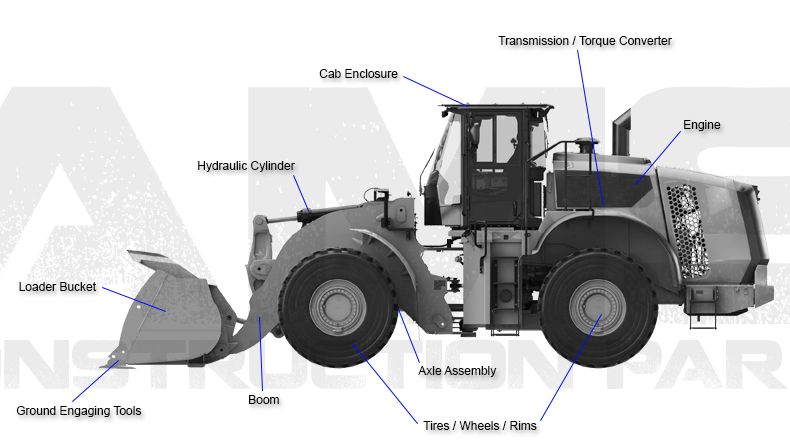 then when the engine is turned off, its turbocharger will still be running at about 40,000 rpm.
then when the engine is turned off, its turbocharger will still be running at about 40,000 rpm.
At the moment of engine shutdown, oil is no longer supplied to the turbocharger. “So the turbo is under a lot of stress and wear at this point,” concludes Phillips, “If you give the engine a couple of minutes to cool down before turning off the car, the turbo is guaranteed to stop spinning by that point. However, if the turbo continues to spin after shutdown motor, the bearings will spin unlubricated, causing overheating and shortening the life of this extremely expensive component." nine0003
Manufacturers of construction equipment are constantly inventing new solutions to reduce these risks. "We equip our machines with shutdown timers," says Phillips. "In other words, after the operator shuts off the engine, the machine will idle for another three minutes and then shut itself down." The cost of this feature more than covers the huge potential cost of replacing a turbocharger in an engine.
There are a number of factors that can cause premature tire wear and failure. nine0003
"Inexperienced operators are prone to tire spin when driving, which is one of the most detrimental effects on the machine. When traction is disrupted, the tire stops doing work," says Phillips, "They do not use differential locks to lock the front axle and provide power distribution to both front wheels instead of one, which would reduce slipping."
Improper tire inflation pressure is another common cause of increased tire wear. “We often see that a significant portion of tire damage is due to incorrect inflation,” says Phillips. “For radial-type tires, low pressure leads to increased heat generation during operation due to the fact that the entire weight of the machine is applied to the point of contact of the tire with the surface. Thus, if the tire is not inflated to a rigid state, it will overheat greatly, which will wear out the rubber surface and reduce the life of the tire. " nine0003
" nine0003
To solve this problem, John Deere offers an integrated tire pressure monitoring system as an option with its loaders. The Auto Differential Lock system senses wheel slip and automatically locks the differential, reducing tire wear and improving traction, resulting in increased overall machine productivity.
In some cases, wheel spin is not the fault of the operator. "Wheels can spin because the type of wheels for a particular model is not properly selected and not suitable for specific working conditions," says Phillips. You will only extract in snowfall and the other 90% of the time they will only get in the way."
It is very important to choose the right tires for the specific work task. This will help ensure their optimum lifespan. "Choose your tread pattern carefully based on your needs," advises Ellis. For example, off-road tires with a wider tread pattern will wear faster on paved surfaces. "If you work all the time on concrete or asphalt surfaces, then it is better to choose an L4 or L5 tread to minimize rubber wear.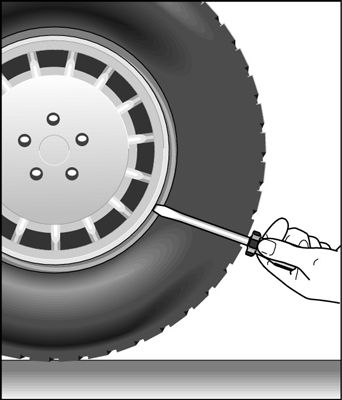 If you work off-road, then you should look at all-terrain tires with a more aggressive tread pattern. Thus, The tread should be selected based on the type of wear your tires will be exposed to. nine0003
If you work off-road, then you should look at all-terrain tires with a more aggressive tread pattern. Thus, The tread should be selected based on the type of wear your tires will be exposed to. nine0003
Today it is difficult to imagine a modern enterprise without the use of special equipment, which helps to quickly and efficiently perform all the necessary loading and unloading operations. Unfortunately, with a certain period of time, even new equipment requires technical inspection and preventive maintenance. Most often, the electronics and tires of the loader need repair and replacement. High-quality and inexpensive tires for forklifts at an affordable price are offered to each client by ITS-Holding. nine0003
- First stage or simple loader tire wear. This type of wear is characterized by damage, which is achieved by fifty percent wear of the rubber surface.
— Various depths of damage in the form of small potholes on the entire surface of rubber tires. Improper use of equipment, various debris on the floor, driving on a curved surface are the main causes of significant damage to the rubber coating. nine0003
Improper use of equipment, various debris on the floor, driving on a curved surface are the main causes of significant damage to the rubber coating. nine0003
Also related: What are the advantages of VR SHINECON virtual reality glasses?
- Metal thresholds, sharp surfaces, uneven floors are the main causes of rubber surface cuts.
— When making sharp maneuvers or not following the rules of operation, abrasions may occur on the rubber coating of the tires.
- First of all, you need to evaluate all loader tires for wear, determine the need for replacement. With minor damage, you can try to restore the surface using available methods. In case of severe wear and damage, the tire must be replaced with a new version. nine0003
- Once the tire wear has been determined, the site must be prepared for all necessary work. You also need to prepare all the necessary tools for replacement and new tires.
— In order to quickly and efficiently change the tire, you need to use a jack. To remove the nuts from the wheel, you must use an air blow wrench. It is best to entrust this procedure to a professional master. This will guarantee the long life of the new tires.
To remove the nuts from the wheel, you must use an air blow wrench. It is best to entrust this procedure to a professional master. This will guarantee the long life of the new tires.
Also related: How to determine the breakdown of the washing machine? nine0003
- In addition, to avoid premature tire wear, you must follow the rules for operating the loader, as well as clean the floor from dangerous objects that can damage the rubber surface of the loader tires.
K category:
Electric cars
Wheel tire change for electric cars and loaders
When the rubber is worn out, the old bandage is removed and the bandage with rubber is put on. This operation is carried out under a screw or hydraulic press with a force of about 500 kg. It is not recommended to use a pneumatic hammer to remove the bandage and its nozzle, as this may distort the ring and damage the bandage and rubber. Below is a method for removing a tire with worn rubber and fitting a new tire on the front wheel of an electric car EK-2. In a similar way, the tires of the wheels of other electric cars and loaders are replaced. nine0003
In a similar way, the tires of the wheels of other electric cars and loaders are replaced. nine0003
To remove and fit mild steel bandages, a supporting part (Fig. 75) is made with a diameter 3-4 mm smaller than the diameter of the bandage, so that it can freely sit on this part during extrusion. The height of this part of the part must be greater than the height of the bandage by 10-15 mm.
Steel ring 4 should have an inner diameter 1.5-2 mm larger than the bandage diameter, and the outer diameter should be such that the ring does not press the bandage rubber.
To remove the tire, the locking bolt 5 is unscrewed, the wheel is mounted on the support part and the ring is applied to it. A press with pressure directed vertically downwards along the arrow P will seat the bandage on the supporting part. nine0003
After that, it is necessary to inspect the seat of the wheel, clean it from dirt and rust, remove burrs and burrs, lubricate with machine oil and install on the support part.
Fig. 75. Change of wheel tires.
Heat a new tire in a water bath to a temperature of 50-60 °C, then carefully place it on the wheel; put a ring on the bandage so that it does not touch the rubber and press it with a press. In this case, it is necessary to ensure that the force from the press is transmitted evenly to the entire ring. When landing the bandage to the full height of the wheel, you must stop pressing so that it does not go further than necessary. After the nozzle, a hole is drilled in the bandage along the hole in the wheel drum, a thread is cut and a locking bolt is screwed in. nine0003
A punctured wheel is usually indicated by extraneous noise from the outside, as well as loss of speed and deterioration in handling. If the car pulls to the side, and in order to keep it on the road, you have to make an effort, then most likely a puncture on one of the front wheels. If the back of the car starts to skid, then the problem is there.
When that happens, you'll know exactly what's going on.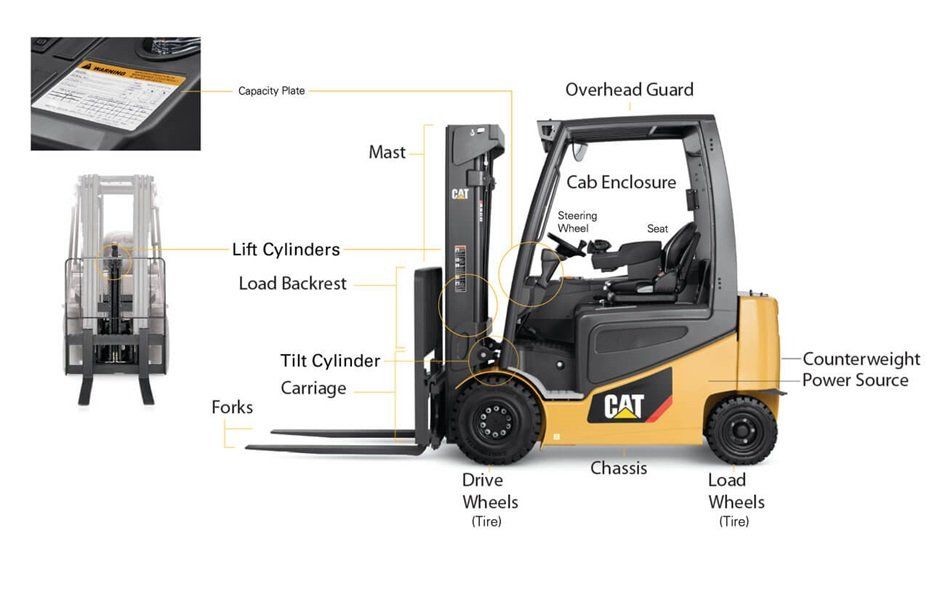 Don't panic by any means. Align the car and, gradually reducing speed, pull over to the side of the road. nine0003
Don't panic by any means. Align the car and, gradually reducing speed, pull over to the side of the road. nine0003
You can't continue driving with a punctured tire, but stopping in the middle of the road is also not a good idea. Therefore, do not be afraid to drive a couple of tens of meters and choose a flat, dry place on the side of the road.
Drivers of cars with a manual transmission must necessarily engage first gear, and owners of automatic transmission must shift the lever to the park (P) position.
And in any case, you need to put the car on the handbrake. nine0003
After parking your car in a safe place, be sure to turn on your hazard warning lights and mount the warning triangle in the trunk. In settlements, it is placed 20 meters behind the car, and on the highway - 40 meters.
In the same place, in the trunk, find a spare wheel and a jack with a wheelbrace. Usually the manufacturer places all this in a special niche under the floor, which can be reached by lifting the bottom panel. nine0003
Usually the manufacturer places all this in a special niche under the floor, which can be reached by lifting the bottom panel. nine0003
It is good if you have a pump and a pressure gauge with you, as well as wheel chocks. And, of course, gloves will not interfere, since you still have to get your hands a little dirty.
After taking out all the tools and spare tire, place them next to the punctured tire and ask all passengers to get out of the car. Even if it's outside or pouring rain, safety comes first.
Despite the handbrake and the gear, before installing the jack, you must additionally fix the wheels with stops. For them, however, any stones or pieces of brick will do. nine0003
If the rear wheel needs to be replaced, the stops are placed on both sides of the front wheels and vice versa.
You are now ready to remove the wheel. First, remove the disc from the plastic cap and use the wheelbrace to loosen the bolts. To move them from their place, you will need a lot of effort, which can be provided by the weight of your body by simply pressing on the key with your foot. It is not necessary to completely unscrew the bolts: it is enough to unscrew them one turn.
To move them from their place, you will need a lot of effort, which can be provided by the weight of your body by simply pressing on the key with your foot. It is not necessary to completely unscrew the bolts: it is enough to unscrew them one turn.
The machine must then be jacked up. In no case should you install it anywhere. Especially for these purposes, there are small reinforced places on the bottom, which are usually located behind the front wheel or immediately in front of the rear. The manufacturer designates them using triangles or cutouts at the bottom of the thresholds. If the weld is covered with plastic pads, they will break at the jacking points. nine0003
Move the jack under the bottom and start turning the jack handle clockwise. Be sure to make sure that the jack rises evenly, does not heel.
If, under the weight of the machine, the lower leg of the jack sinks into the ground, you need to put something like a piece of board or brick under it.
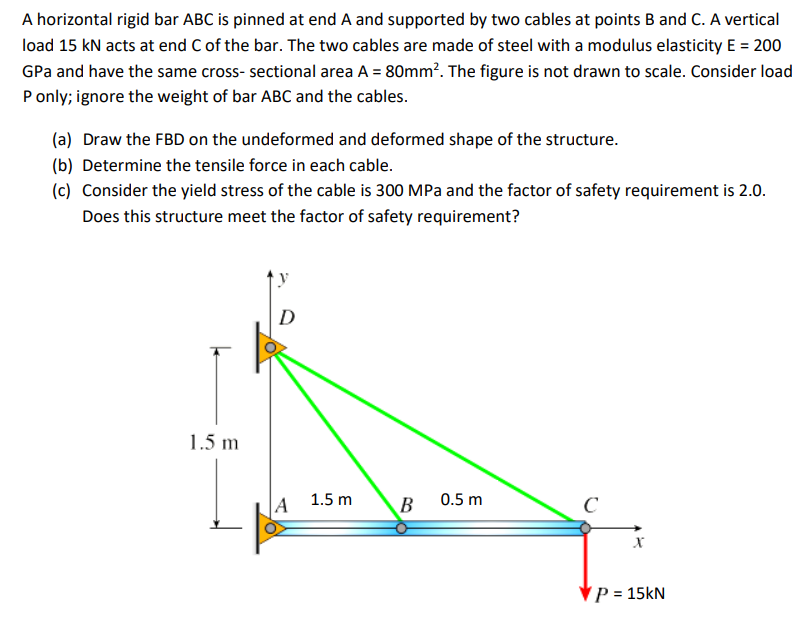
Do not raise the wheel too much. It is enough to stop 5 cm from the ground. After that, you can completely unscrew the bolts and remove the punctured wheel from the hub. It is better to slide it under the car as insurance, and put the bolts somewhere on a rag so that they are not lost. nine0003
It remains to put a spare tire instead of a punctured wheel. To do this, align the holes on the disc with the holes in the hub, put the wheel on and screw on the bolts, completely wrapping them by hand.
It is important to install the nuts that fasten the wheels to the hub with the semi-circular side towards the rim, and not out.
Remove the punctured wheel from under the machine, lower the jack and finally tighten the bolts. You need to do it right. On wheels with four or six holes, opposite bolts are tightened in pairs. If there are five holes, then you need to pull in this order, as if you are drawing a five-pointed star.